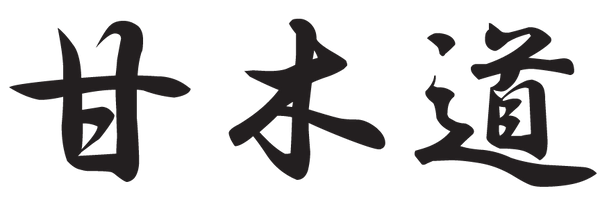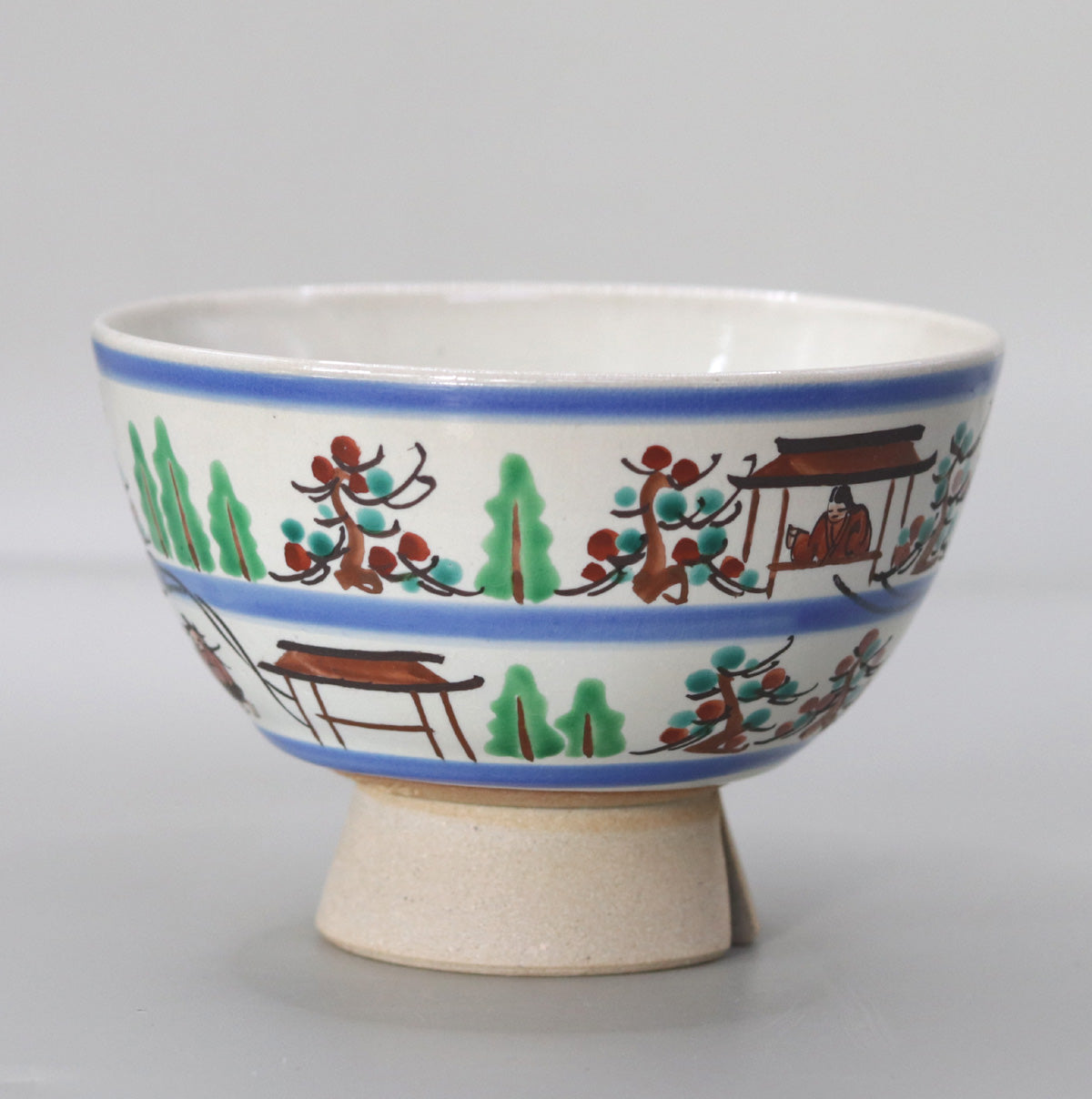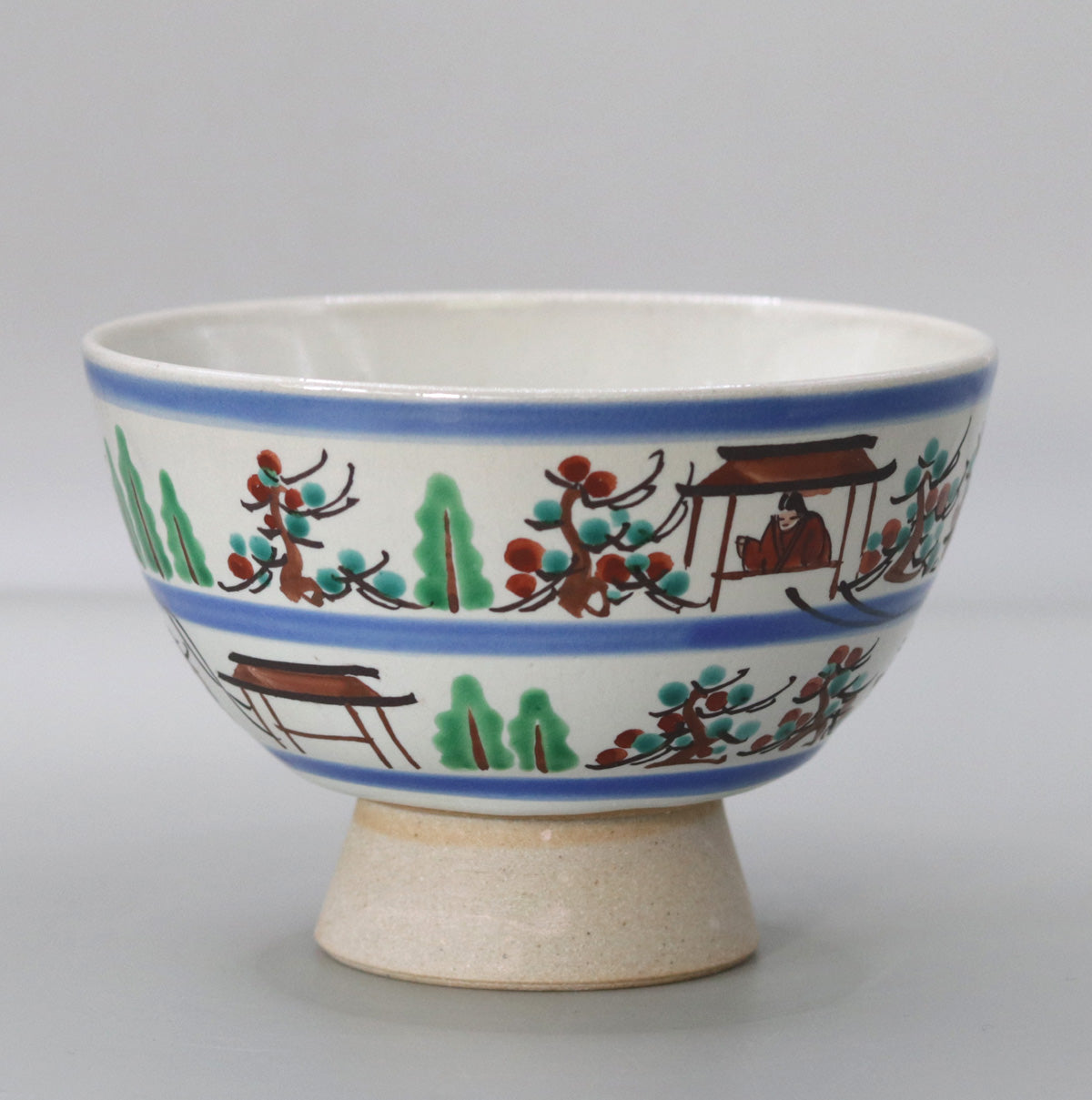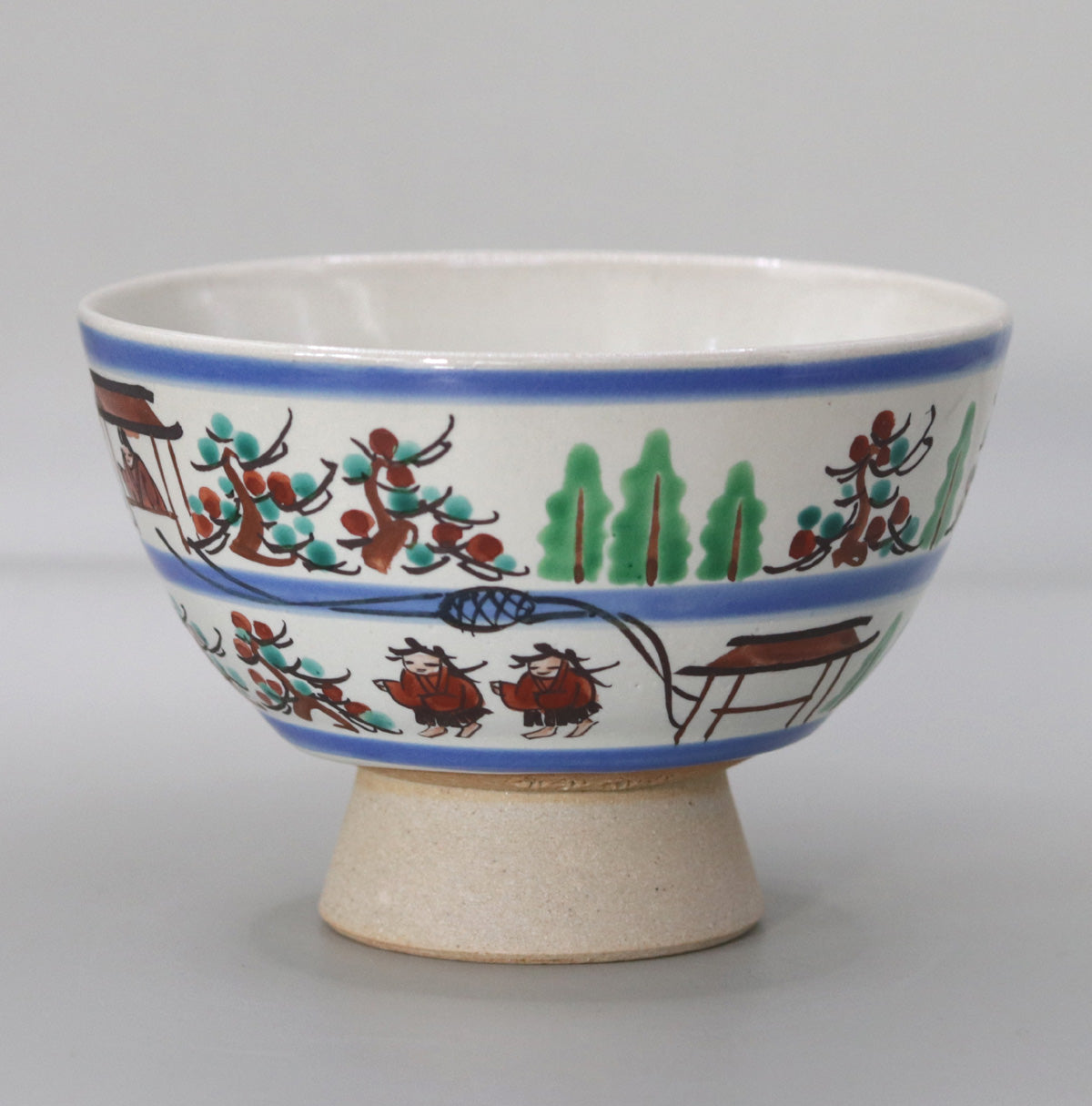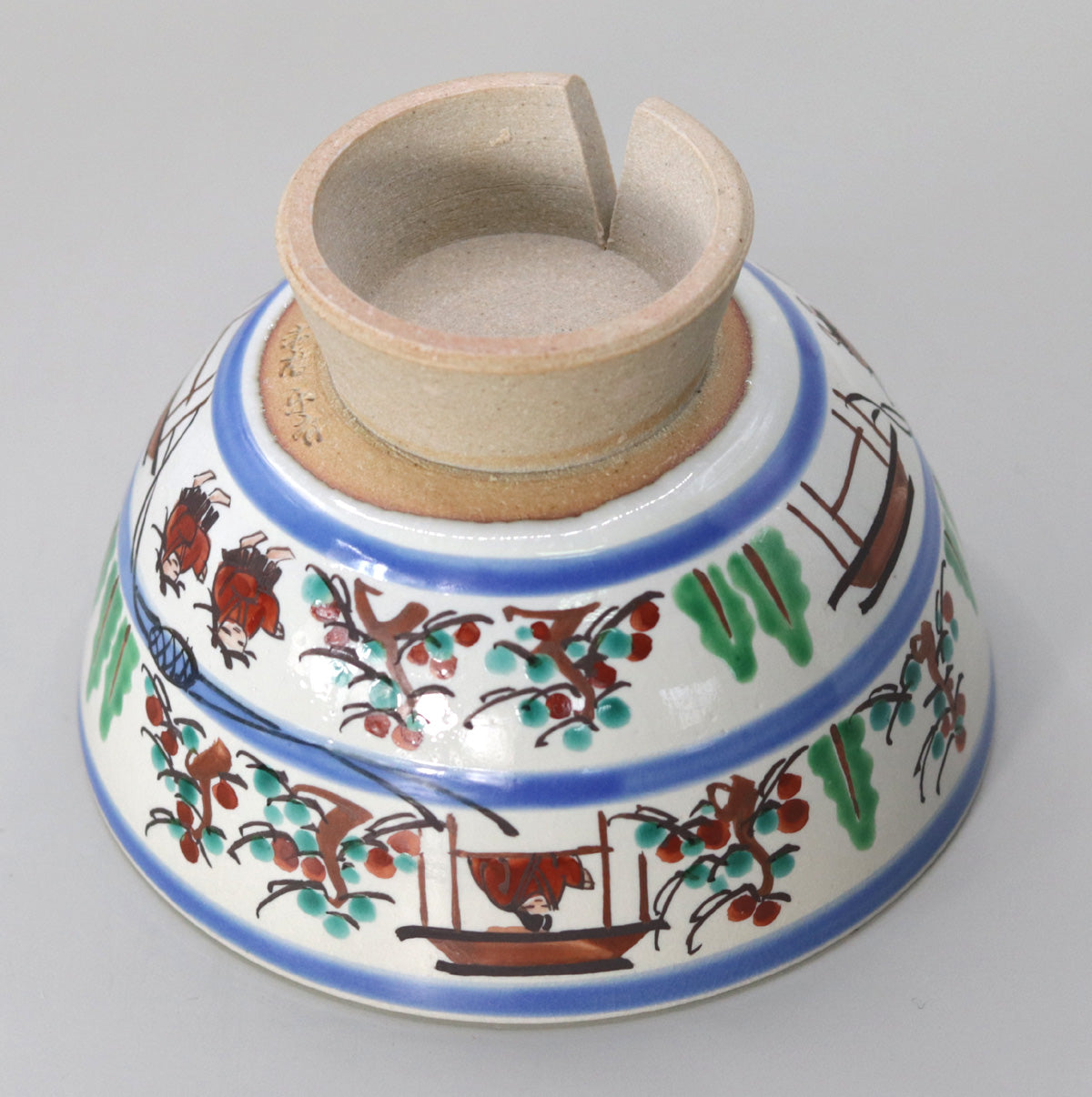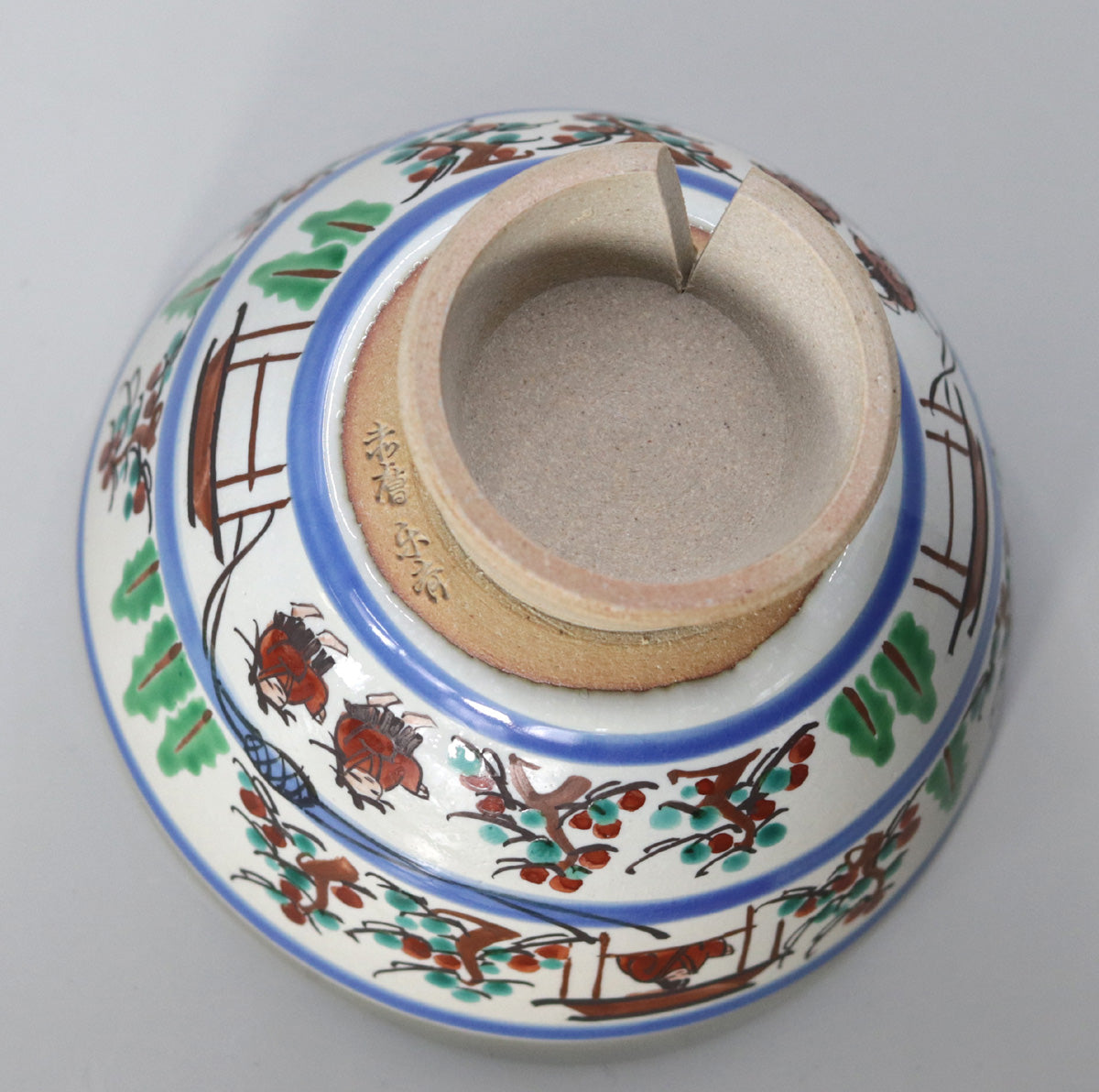Nara tea bowl with Goki style painting by Rakusai Onishi
Nara tea bowl with Goki style painting by Rakusai Onishi
Couldn't load pickup availability
Width: 11.7cm Height: 8.1cm
Onishi Rakusai's Goki-style Nara-e tea bowl features the bold Goki design, which originated from rice bowls from the Joseon Dynasty of Korea, and is adorned with a light, Nara-e motif, creating a bowl that strikes a striking balance between wabi and miyabi. The design, which features pine trees, shrines, and noble figures, evokes the imperial culture of the ancient capital of Nara, and adds a rich narrative quality to conversations at tea ceremonies. Below, we will introduce the appeal of this piece from five perspectives.
1. Shape and clay
The volume unique to the Go-ki style <br data-start="235" data-end="238">The bowl shape, with a moderately bulging body and a modestly tapered rim, is an ideal silhouette that allows the tea whisk to rotate naturally and makes it easy to create a uniform froth.
Split foot <br data-start="317" data-end="320">The split foot inherits the design of Korean rice bowls, providing both a good grip and stability. The rough, sandy texture of the base gives a comfortable grip to your fingertips.
The tranquility of pale celadon glaze <br data-start="409" data-end="412">The pale celadon glaze that covers the lower half of the exterior and interior softly brings out the green of the matcha, creating a stage that elegantly highlights the saturation of the Nara-e obi.
2. Nara Picture Design - Moving Picture Scrolls
Two-tiered obi structure <br data-start="511" data-end="514">The two gosu obi, divided into upper and lower sections in the center of the bowl, act as a frame for the white Nara-e obi. Each time the bowl is turned, the upper and lower scroll images appear alternately, creating a dynamic rhythm.
Accents of pine and vermilion berries <br data-start="616" data-end="619">The pine trunks are represented in vermilion and iron, the leaves in verdigris, and scattered red berries add rhythm to the color tones. The design echoes the green of matcha.
The nobleman and the Kagura Hall <br data-start="691" data-end="694">A scene in which a nobleman in scarlet robes sits in a pavilion, an empty torii gate, and a long banquet table are depicted in relay scenes, unfolding a story reminiscent of ancient festivals.
3. Techniques - The Wonders of the Five Colors of Kyoto Ware
Extremely fine iron lines <br data-start="789" data-end="792">The outlines are pressed down with iron paint, and the lines are kept steady down to the finest details, giving the simple design a refined elegance.
Layers of verdigris, cinnabar, and ochre <br data-start="864" data-end="867">The coloring follows the traditional five colors, but is fired twice at gradually changing temperatures, giving the colored surface a glossy finish and depth.
Blurring of the gosu obi <br data-start="938" data-end="941">The indigo gosu obi is blurred, leaving the brush marks visible, visually softening the boundary between stillness and movement.
4. Functional beauty at the tea ceremony
Matcha looks great <br data-start="1017" data-end="1020">The pale blue glaze on the inside brings out the jade green of the matcha in a pure way, and the white bubbles create a beautiful contrast with the indigo of the gosu obi.
Space for storytelling <br data-start="1082" data-end="1085">The ribbon-shaped Nara painting has the feel of a picture scroll. As the host turns the bowl, he can share with his guests stories of festivals and nobles from the ancient capital.
Versatile for any season <br data-start="1160" data-end="1163">Universal motifs such as pine trees and shrines are suitable for a wide range of tea ceremonies, from New Year's to autumn moon-viewing, and one of their appealing features is the high degree of freedom in how they can be combined.
5. Cultural background and modernity
The Goki style is a symbol of the "wabi" aesthetic of Momoyama tea ware, while Narae is an iconography of the "elegance" that flourished in the early Edo period. This work combines these two major trends in a single bowl, and the pale celadon glaze and gosu band add a modern, refreshing feel. Onishi Rakusai has brilliantly achieved a design balance that is based on the classics while blending comfortably into a modern tea ceremony.
The Nara-e painting, sandwiched between an indigo band, weaves a story as the bowl is turned, and the tranquility of the pale celadon glaze embraces the pure green of the matcha. Onishi Rakusai's Goki-style Nara-e tea bowl is a "moving picture scroll" that combines the beauty of utility and the beauty of storytelling. When placed at a tea ceremony, guests will enjoy a cup of matcha and elegant conversation while feeling the breeze of the ancient capital.
Share


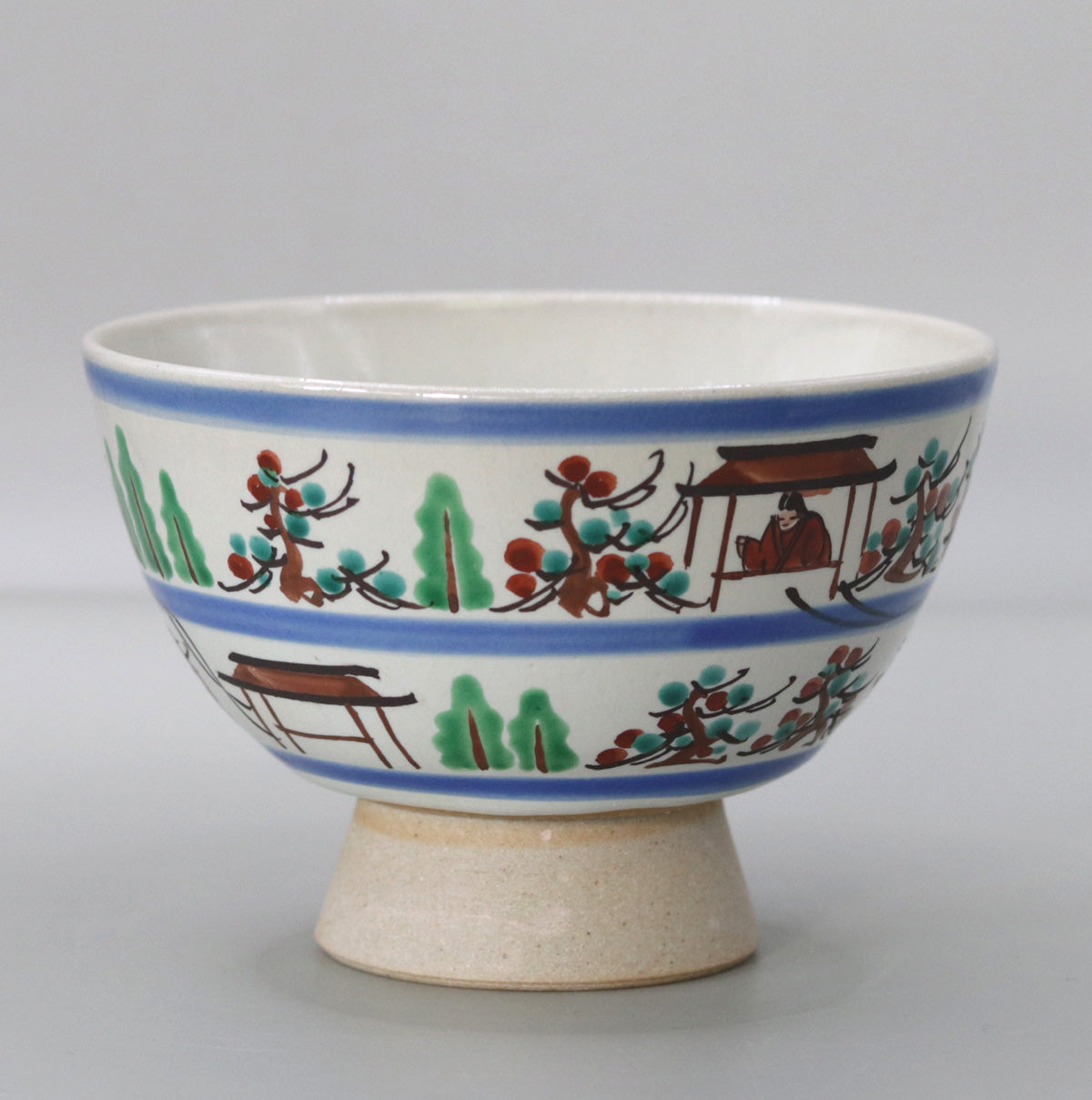
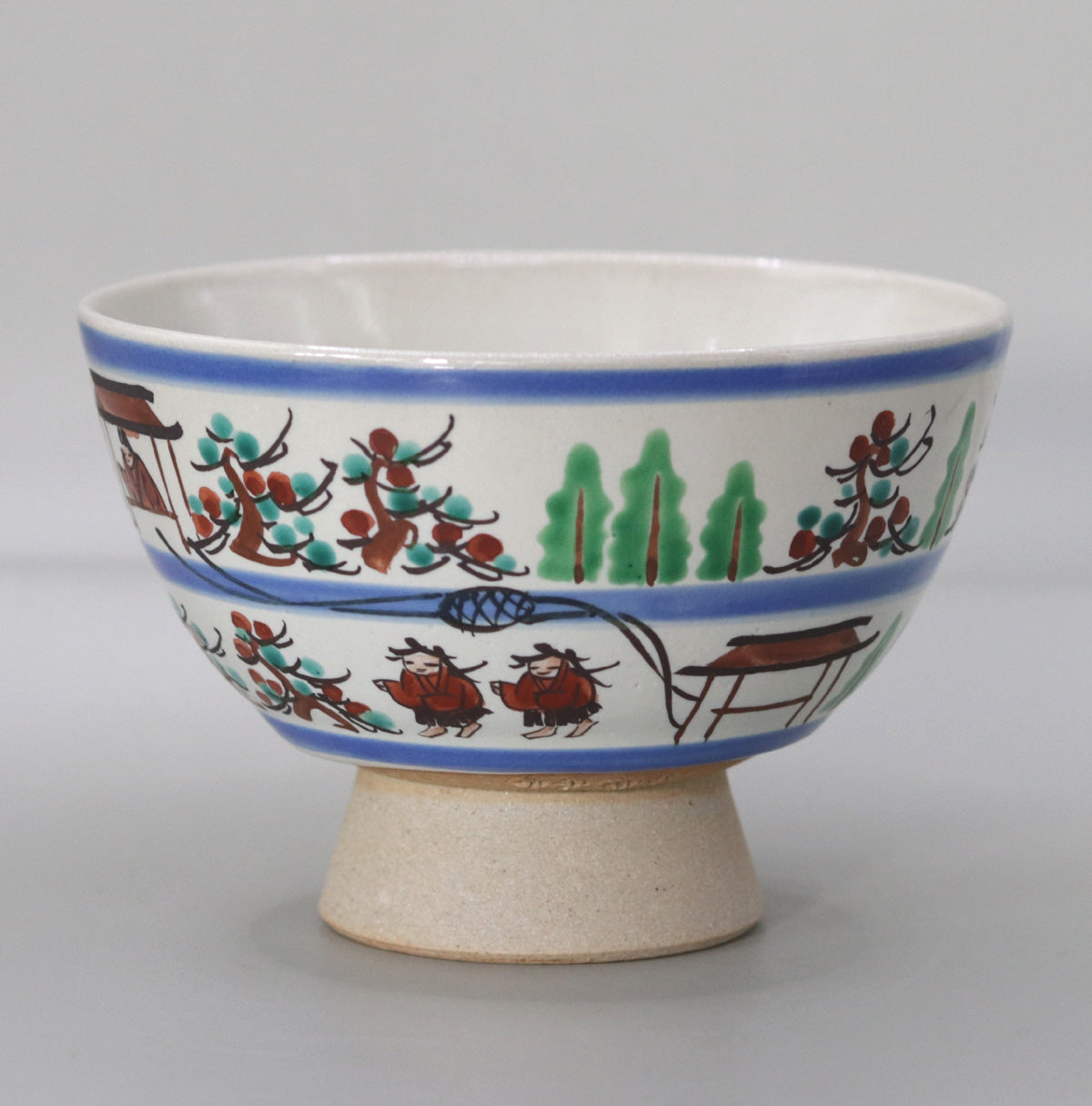

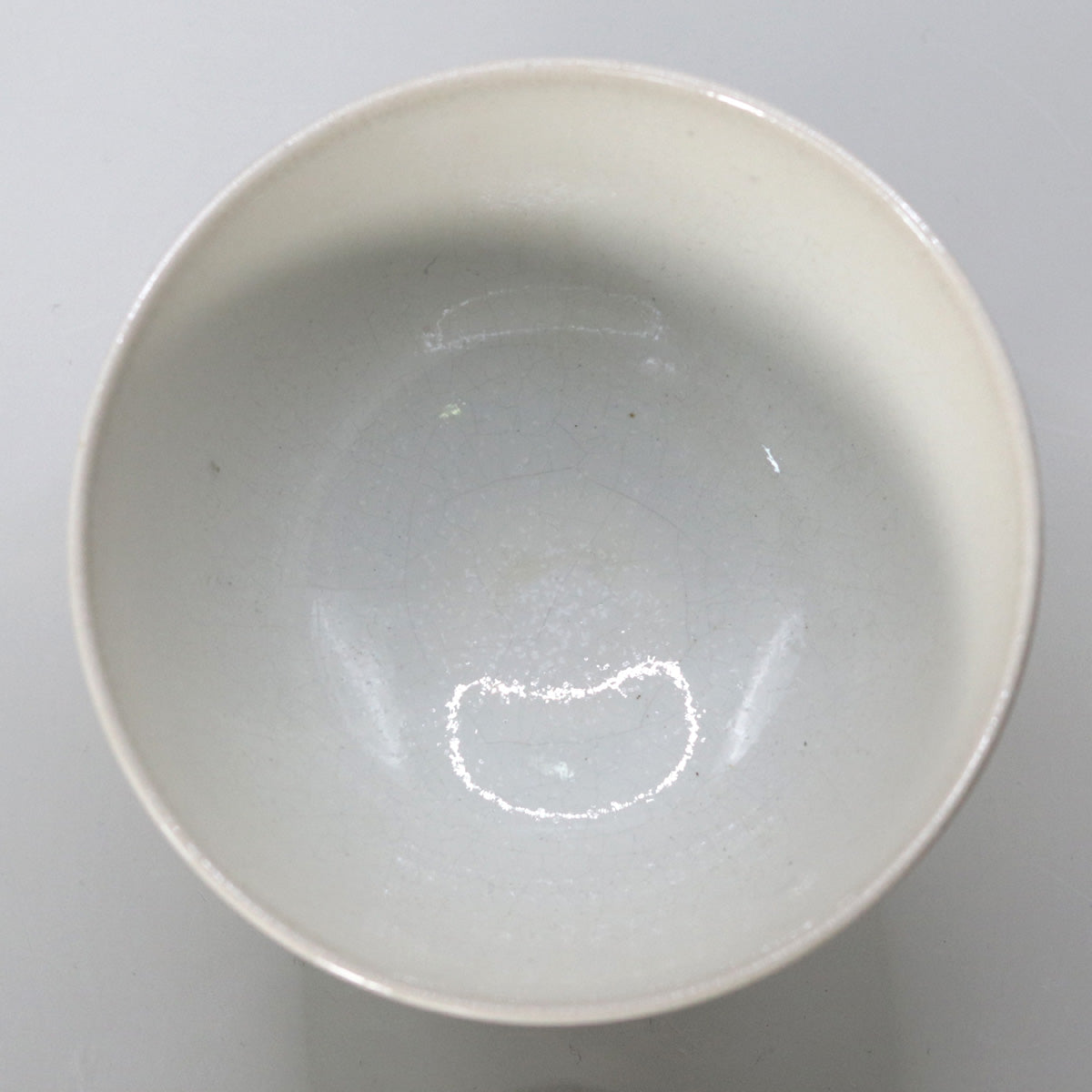
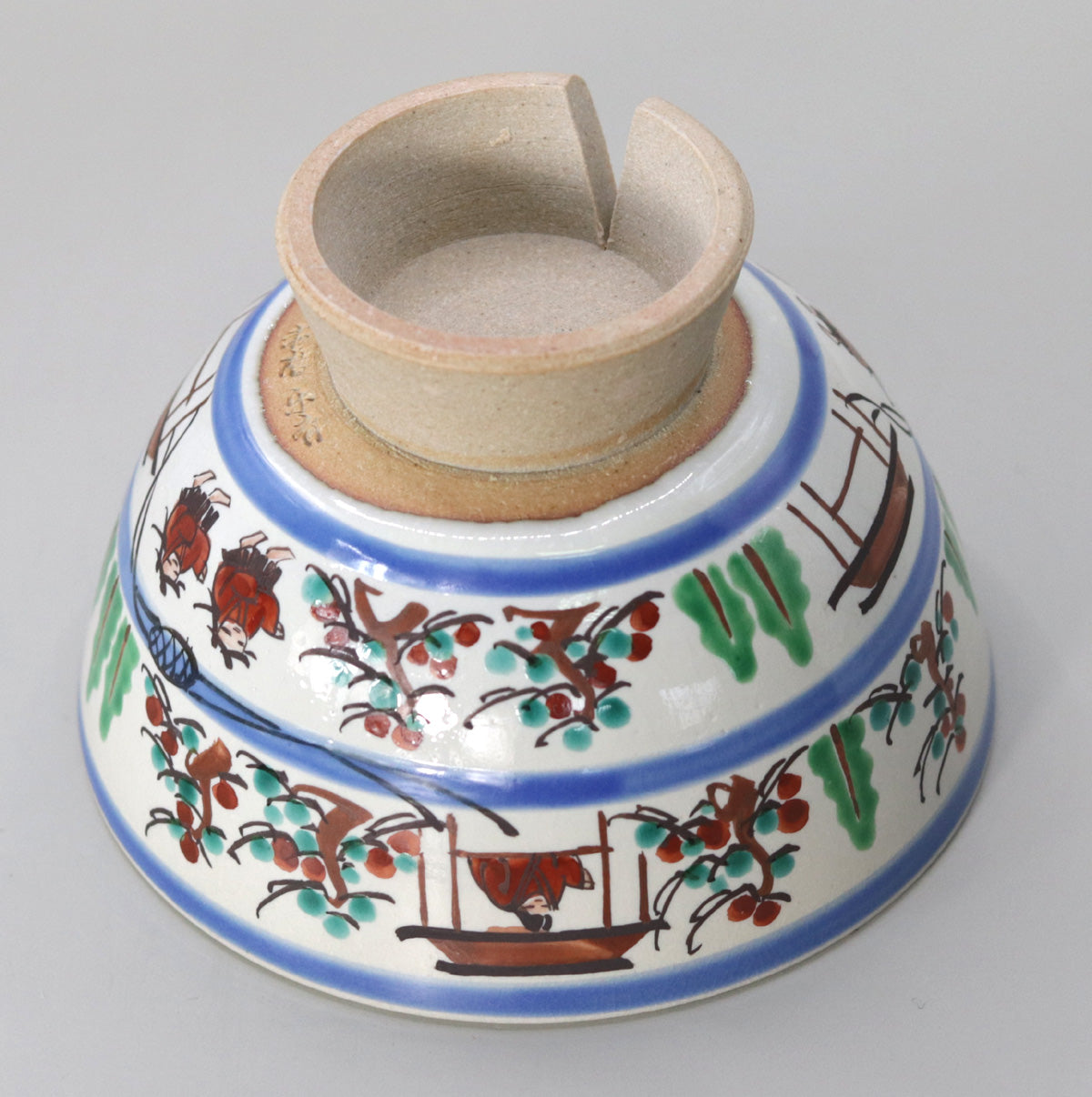

Multi-Column
-
[I will send it to you quickly and carefully]
We carefully package each product in a way that suits it best.
Also, delivery times vary depending on the piece (vessel, etc.).
Items that already come with a box will be shipped within 1-3 days of the order date.
For items that require a box to be made after your order, it will take approximately 30 days for production to be completed and then shipped.
In either case, once we have confirmed your order, we will contact you by email to inform you of the delivery date.
-
[Requests when purchasing pottery]
Even products that look the same may differ slightly in color, shape, size, etc.
The way the glaze is used, the power of the kiln, the firing method, the season, and the humidity also affect the appearance of the pottery.
Please understand the individuality of each piece of pottery and enjoy the unique warmth of handmade.
